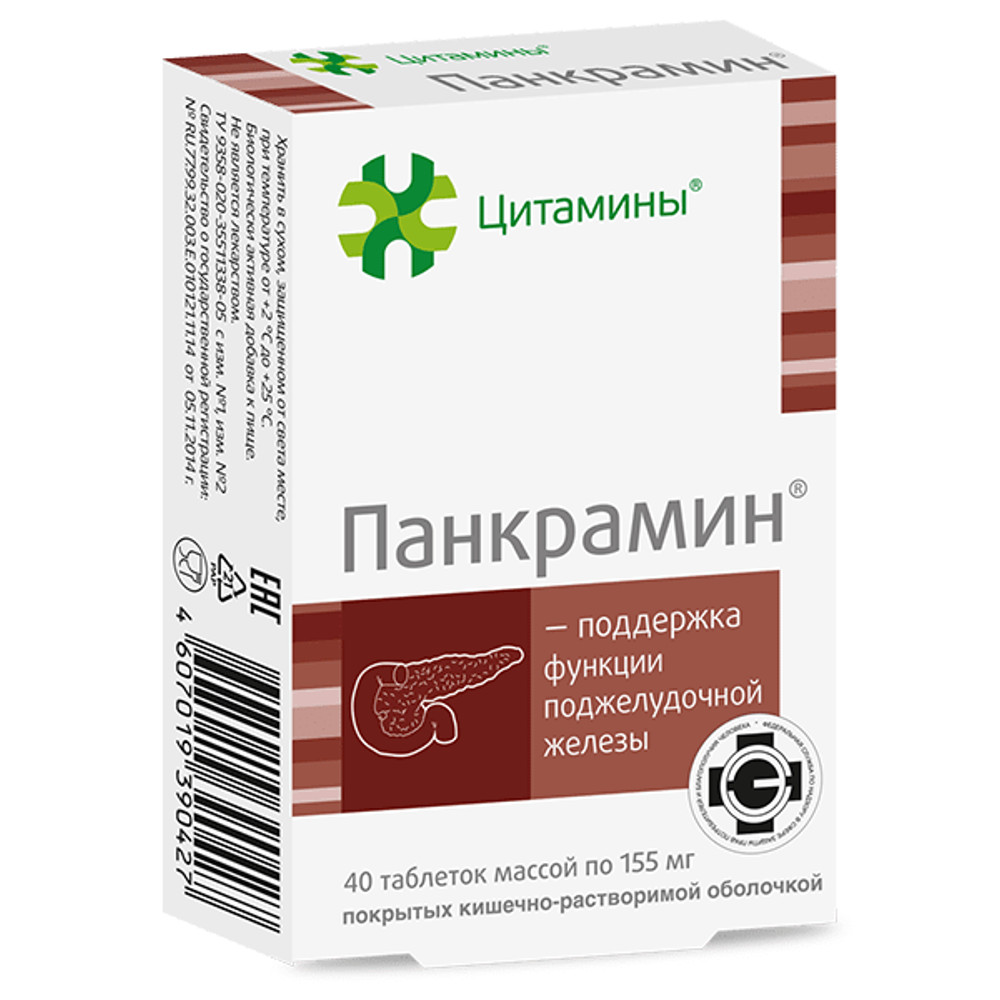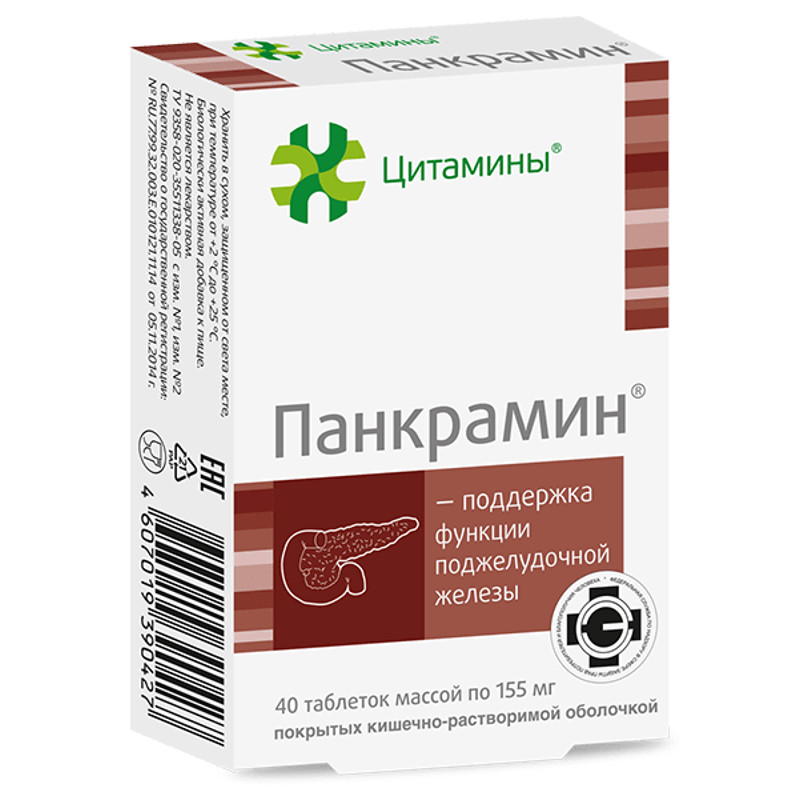Pancramine Pancreatic Health
Quantity
IS NOT A MEDICINE
It is recommended to improve the functioning of the pancreas, normalizes digestion and metabolic processes in the body.
Acute pancreatitis
Chronic pancreatitis
Insulin-dependent diabetes
Diseases of the gastrointestinal tract with metabolic disorders
Pre- and postoperative period during operations on the organs of the gastrointestinal tract, pancreas and duodenum
Old age (to maintain the normal function of the digestive system)
For elderly people to maintain the activity of pancreatic cells
The pancreas, located behind the stomach, is 15-20 centimeters long and weighs only 50-70 grams. However, the importance of this organ in digestion and metabolism of the body as a whole is difficult to overestimate. Firstly, the pancreas produces pancreatic juice consisting of three main enzymes: lipase (helps to break down fats), amylase (responsible for carbohydrates), chymotrypsin and trypsin (cleave proteins). Secondly, the pancreas secretes insulin, glucagon and other hormones, which, entering the blood, normalize glucose metabolism. If this system fails, there is a terrible disease – diabetes.
Damage to pancreatic cells can be associated with many factors:
An infectious factor (viruses and bacteria) that causes inflammation of the pancreas pancreatitis;
Toxic factors (e.g. alcohol consumption) also destroying pancreatic cells;
Long-term increase in blood glucose levels;
Autoimmune disorders and much more.
In order for cells to recover and be protected from damage, they first need proteins. But each type of tissue contains certain types of proteins.
The components for Pancramine obtained from the pancreas of cattle do not contain insulin and are represented by a complex of proteins and nucleoproteins with a specific, selective effect on the cellular structures of the human pancreas. The thing is that the complexes of proteins and nucleoproteins are identical in all mammals. Due to this, Pancramine promotes the activation of regenerative processes in the gland tissue and normalizes its digestive and hormonal functions.
Like all cytamines, due to the mechanism of transcytosis, Pancramine acts purposefully on the cells of the pancreas and contributes to the normalization of their function.
Due to the mechanism of transcytosis, the incoming protein appears unchanged in the target cell. In this case, the target is pancreatic cells - pancreocytes. Getting into them, Pancramine saturates them with an optimal protein "diet", allowing cells to recover faster and normalize the performance of their functions – the release of insulin and enzymes for normal digestion.
Clinical trials of Pancramine were conducted in 125 patients with chronic pancreatitis and latent type 1 diabetes mellitus.
During the course of the use of Pancramine in people with chronic pancreatitis, appetite increased, the frequency of dyspeptic disorders decreased, and general well-being improved. There was an increase in the activity of pancreatic enzymes (trypsin and amylase), which corresponded to positive clinical dynamics.
In patients with latent diabetes mellitus, Pancramine was used under the control of a glucose tolerance test, while it was found that against the background of taking Pancramine, there was a gradual decrease in blood glucose levels with subsequent normalization
Method of application
Pancramin is recommended to take 1-3 tablets, 10-15 minutes before meals, 2-3 times a day, for 10-15 days. Repeat course in 3-6 months. Pancramine has no contraindications and can be used both independently and as part of complex therapy.



